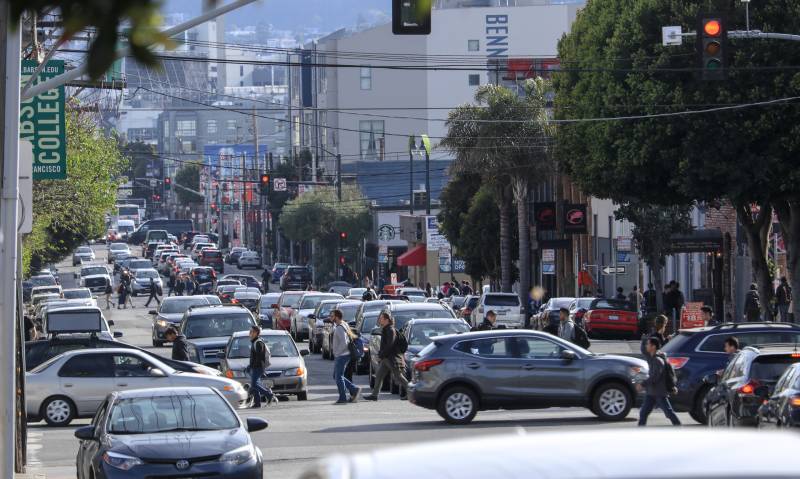And it’s not just about which violations are getting citations; it’s also about where those citations are being given. In 2017, as part of Vision Zero SF, the SFMTA identified that 13% of the city’s streets accounted for 75% of all severe and fatal traffic injuries, referring to this as the “high-injury network,” or HIN. The plan was that the SFPD would focus on FOTFs in the HIN to reach Vision Zero SF goals. But Braitsch and Bornheimer found that what was happening on the ground was very different, with only 60% of all citations over the past 18 months being in the HIN.
Their data also reveals disproportionate and misdirected enforcement in equity priority communities, which the San Francisco County Transportation Authority describes as areas that include “populations and communities that could be considered disadvantaged or vulnerable now and in the future.”
“In our equity priority communities, the areas with the most vulnerable residents, only 28% of citation activity is focused on the five, which means that the SFPD is disproportionately targeting residents in our most vulnerable communities for violations that don’t actually affect public safety,” said Bornheimer. “This is broken taillights, expired tags, things like this. They should be focused on speeding and dangerous driving that actually result in physical injury.”
Considering that San Francisco is headed toward experiencing its deadliest year since 2007 in terms of motor vehicle violence, the most startling finding from Braitsch and Bornheimer’s analysis comes when they merge the high-injury network figures with the FOTF figures in equity priority communities, revealing that less than one-fifth of all citations are essentially contributing to improving traffic safety in the city.
“Only 18% of all citations citywide are on the high-injury network for violations that are focusing on the five. That is a big problem in our eyes,” said Bornheimer.
The solution? Braitsch and Bornheimer say three main areas could improve the situation drastically: infrastructure, data and transparency, and enforcement.
“Infrastructure is the most effective way to stop people from getting killed and seriously injured on our streets,” Bornheimer told District 8 Supervisor Rafael Mandelman, who called the hearing. “And so we need to ramp that up while also increasing transparency and data.”
Braitsch and Bornheimer listed red-light cameras, bureaucratic and procedural streamlining, and pedestrian and bike path improvements as being key infrastructural improvements, while also highlighting the need for open and transparent weekly crash data to be uploaded on DataSF by the SFPD and the San Francisco Department of Public Health; a monthly report on the infrastructural improvements made by the SFMTA; more interagency collaboration to standardize data; and to work with an outside vendor to update the HIN based on the latest crash data available.
As for enforcement, Braitsch and Bornheimer have no doubt what needs to be done.
“We know where our most dangerous streets are, where people get hurt most often, and we know what violations most severely impact people’s safety. We want to see the (SFPD) use the resources that they have — which have not changed much since 2019 and before — to enforce and focus on the five major violations on the high-injury network. Doing that and doing it for a certain period of time moving forward will hopefully make our streets safer.”

